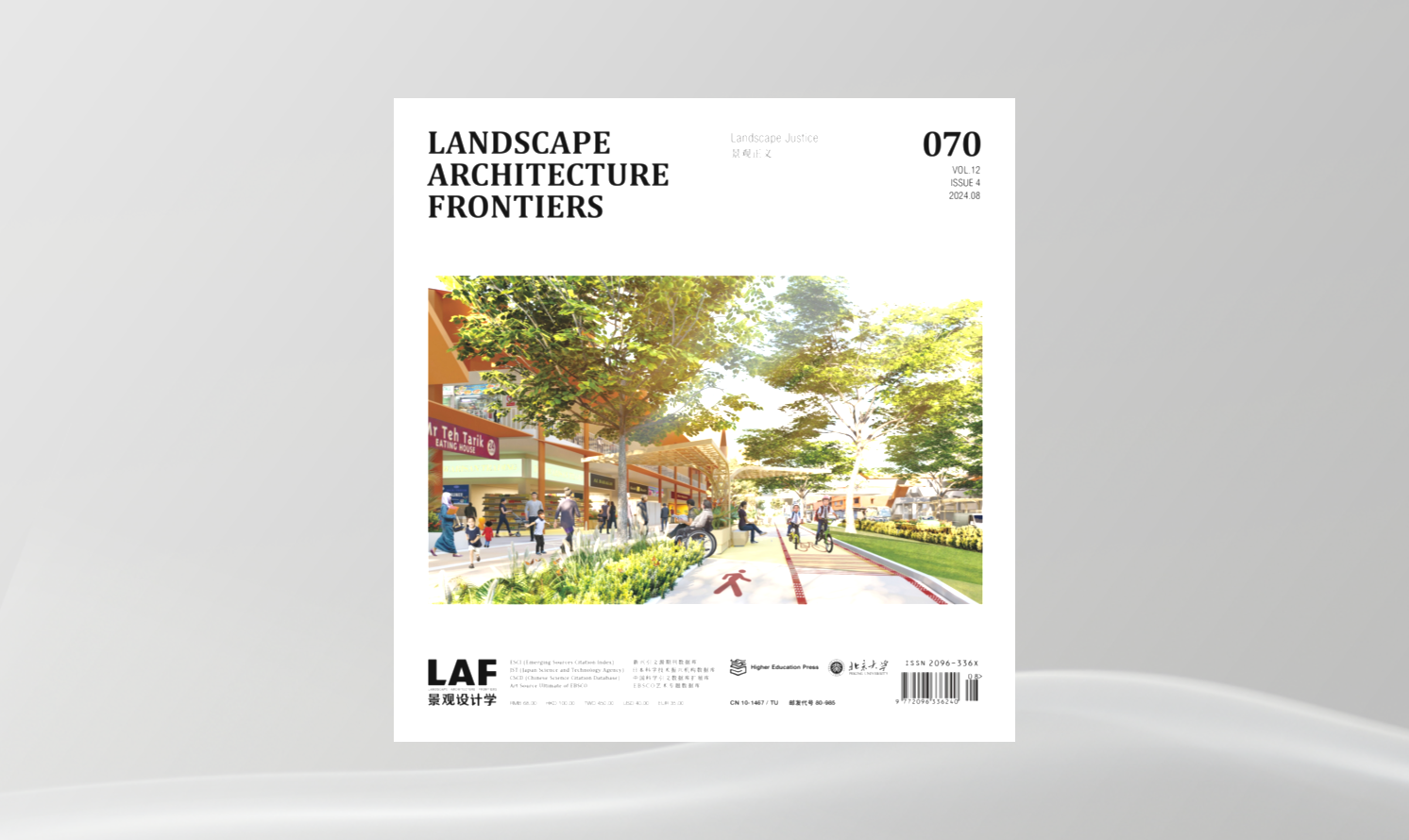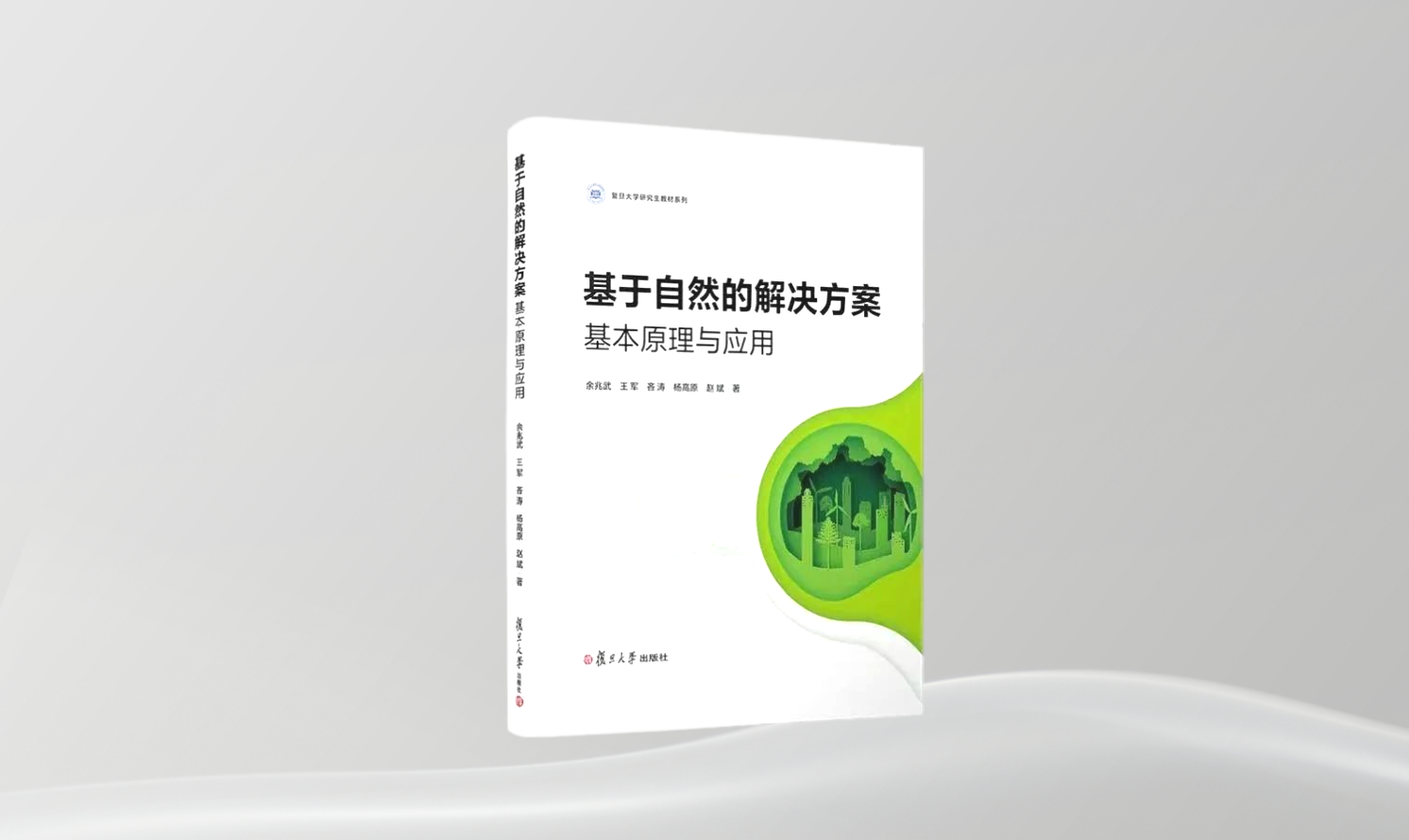中國景觀設(shè)計(jì)職業(yè)準(zhǔn)入門檻與核心專業(yè)技能
Professional Qualification for and Core Means of Landscape Architects in China
(李迪華�,《景觀設(shè)計(jì)學(xué)》2023年第5期“主編寄語”)
建筑學(xué)、景觀設(shè)計(jì)學(xué)����,以及城市與區(qū)域規(guī)劃在美國被譽(yù)為城鄉(xiāng)建設(shè)和生態(tài)保護(hù)領(lǐng)域的“三架馬車”[1]。這三個(gè)專業(yè)的邊界清晰����,卻相輔相成,一起履行相關(guān)領(lǐng)域的專業(yè)職責(zé)�����。當(dāng)代中國景觀學(xué)(包括園林����、風(fēng)景園林���、景觀建筑學(xué)��、景觀設(shè)計(jì)學(xué)����、環(huán)境藝術(shù)設(shè)計(jì)等不同方向和名稱的探索)誕生已經(jīng)有七十余年,卻并未像人們期待的那樣成為一個(gè)擁有市場開拓能力和社會(huì)責(zé)任清晰的應(yīng)用型學(xué)科�,反而一直被詬病“準(zhǔn)入門檻低”“技術(shù)含量不高”等,社會(huì)認(rèn)可不盡人意�����。這些問題長期困擾著中國景觀設(shè)計(jì)的行業(yè)��、教育發(fā)展及其公眾認(rèn)知[2]~[5]�����。
景觀學(xué)有哪些專業(yè)準(zhǔn)入門檻����?景觀學(xué)的核心專業(yè)技能是什么?結(jié)合近二十年的持續(xù)探索,筆者嘗試給出一個(gè)答案����。景觀學(xué)的專業(yè)準(zhǔn)入門檻體現(xiàn)在以下幾個(gè)方面[1]~[4][6]:
第一,設(shè)計(jì)師應(yīng)當(dāng)熟悉相關(guān)法律�。自2015年起,景觀設(shè)計(jì)成為終身責(zé)任制的職業(yè)�,《中華人民共和國環(huán)境保護(hù)法》(2015年1月1日起施行)、《中華人民共和國無障礙環(huán)境建設(shè)法》(2023年9月1日起施行)對(duì)此均作出了明確的要求�����。這兩項(xiàng)法案和《中華人民共和國民法典》等法規(guī)共同構(gòu)成了設(shè)計(jì)師應(yīng)當(dāng)熟悉的法律要求�����。
第二����,設(shè)計(jì)師應(yīng)當(dāng)掌握工程標(biāo)準(zhǔn)規(guī)范并做到更好,包括《建筑與市政工程無障礙通用規(guī)范》(GB 55019—2021�����,2022年4月1日起施行)及實(shí)際項(xiàng)目中遇到的細(xì)分領(lǐng)域的各項(xiàng)標(biāo)準(zhǔn)規(guī)范����。
第三��,設(shè)計(jì)師要擁有同理心和職業(yè)常識(shí)����,追求“只有使用者想不到的�,沒有設(shè)計(jì)師想不到的”的建成環(huán)境�����,愿意終身為具體的人付出�,為弱者付出,為細(xì)節(jié)付出�����,為未來付出�����。
第四���,設(shè)計(jì)師是具備專業(yè)勝任力的職業(yè)人士���。法律和社會(huì)需求賦予設(shè)計(jì)師的各項(xiàng)職能——維護(hù)公共利益��、呵護(hù)人的健康與生命安全�����、改善人和其他生命的生存福祉�、維護(hù)地球生態(tài)系統(tǒng)健康和生態(tài)系統(tǒng)服務(wù)可持續(xù)供給�����,以及探索適應(yīng)全球氣候變化的解決方案——都需要我們主動(dòng)擔(dān)當(dāng)����。
第五,用最高的職業(yè)道德要求自己���,職業(yè)倫理����、行業(yè)自律是專業(yè)素養(yǎng)提升的基本保障���。
景觀學(xué)的核心專業(yè)技能在于:其一�����,擁有統(tǒng)籌項(xiàng)目落地的專業(yè)能力��。任何項(xiàng)目都是包括項(xiàng)目建議�����、評(píng)估策劃����、規(guī)劃�����、設(shè)計(jì)����、方案深化、施工圖設(shè)計(jì)�����、施工�����、監(jiān)理、驗(yàn)收�����、建成使用后評(píng)價(jià)��、使用和維護(hù)等復(fù)雜環(huán)節(jié)的結(jié)構(gòu)體系��,景觀設(shè)計(jì)師是當(dāng)仁不讓的統(tǒng)領(lǐng)項(xiàng)目全過程的最佳角色����!其二,具備完成循證設(shè)計(jì)所需的設(shè)計(jì)知識(shí)�、方法與價(jià)值觀念,以及做好交叉學(xué)科和跨學(xué)科實(shí)踐研究的能力���。合格的景觀設(shè)計(jì)師能夠從跨學(xué)科與跨領(lǐng)域知識(shí)�����、場地����、使用者、審美��、社會(huì)責(zé)任和設(shè)計(jì)語言等方面構(gòu)建設(shè)計(jì)的邏輯框架���。其三�,擁有通過設(shè)計(jì)助推城市居民觀念和生活方式轉(zhuǎn)型的能力�����,景觀設(shè)計(jì)師應(yīng)當(dāng)是通往未知和未來的創(chuàng)新實(shí)踐的引領(lǐng)者與倡導(dǎo)者�����。其四���,具備傾聽、溝通�����、表達(dá)�、協(xié)作和合作的能力,包括謙和的態(tài)度�����、清晰的語言和靈活多樣的交流與表達(dá)手段。其五�����,擁有與時(shí)俱進(jìn)及終身學(xué)習(xí)�、應(yīng)用前沿技術(shù)和現(xiàn)學(xué)現(xiàn)用能力。設(shè)計(jì)是關(guān)乎“改變”的職業(yè)���,鮮有設(shè)計(jì)師會(huì)一直做相似的項(xiàng)目或只在一地做項(xiàng)目�����,學(xué)習(xí)新知識(shí)和保持良好的工作習(xí)慣對(duì)于掌握層出不窮的新技術(shù)和滿足不斷變化的條件與場景需求至關(guān)重要�����。[5]~[8]
景觀設(shè)計(jì)師如果能夠推動(dòng)建設(shè)“走路無需看路的城市”和“遇到石頭都能說三句話”的人和人之間彼此信任的和諧家園����,那么景觀學(xué)的社會(huì)地位就一定不可替代���?���!稛o障礙環(huán)境建設(shè)法》的實(shí)施為設(shè)計(jì)師創(chuàng)造了這樣的機(jī)會(huì)[6]~[10],這要求我們做到:第一��,統(tǒng)籌景觀工程落地的全過程����,做到從方案建議到設(shè)計(jì)、施工和使用維護(hù)“一路向好”來取得滿意成果���;第二�����,通過精心設(shè)計(jì)的細(xì)節(jié)帶來對(duì)人的無微不至的關(guān)懷和令人驚嘆的美���;第三,轉(zhuǎn)變觀念���,包括對(duì)人、對(duì)自然的態(tài)度����,以及對(duì)自我的反思與重構(gòu)���,能夠適應(yīng)多樣的環(huán)境和多變的社會(huì)需求;第四���,推進(jìn)跨學(xué)科�、跨領(lǐng)域的研究與實(shí)踐����,包括但遠(yuǎn)不局限于建筑學(xué)、城市規(guī)劃�、景觀設(shè)計(jì)學(xué),以及法學(xué)�����、社會(huì)學(xué)����、經(jīng)濟(jì)學(xué)、老年學(xué)����、信息技術(shù)、神經(jīng)科學(xué)、精神健康����、心理與行為科學(xué)、產(chǎn)品設(shè)計(jì)�、材料科學(xué)、工程管理等學(xué)科間的合作���;第五����,將無障礙環(huán)境建設(shè)作為氣候適應(yīng)性城市建設(shè)的途徑�����。
總而言之���,設(shè)計(jì)關(guān)乎時(shí)代使命的思想表達(dá)�����。景觀學(xué)作為美麗中國事業(yè)和可持續(xù)發(fā)展落地和的支撐性學(xué)科����,能否引領(lǐng)未來�����,取決于我們是否愿意從專業(yè)準(zhǔn)入門檻�����、專業(yè)技術(shù)水平���、專業(yè)教育和行業(yè)自律等方面不斷提高對(duì)自身要求�。
Architecture, Landscape Architecture, and Urban and Regional Planning are three major professions leading urban and rural development and ecological conservation in the United States[1]. Although having clear boundaries, they are complementary each other to fulfill professional responsibilities in related fields. Although contemporary Landscape Architecture has been introduced for more than seventy years in China, it has not become an applied profession with mature market and well-defined social responsibility as expected. Instead, landscape architects have often been criticized for being “easily qualified” and “l(fā)ow technic requirements,” resulting in unsatisfactory social recognition. Such issues have long-time hindered the development of Landscape Architecture profession and education in China, as well as its public perception[2]~[5].
How to be qualified for practicing Landscape Architecture? And what are the core means of this profession? Combining with nearly twenty years’ continuous exploration, the author attempts to answer these questions by proposing the suggestions for landscape architects’ professional qualification as the followings[1]~[4][6]:
First, landscape architects should have knowledge about relevant laws. Since 2015, Landscape Architecture has become a profession with lifelong responsibility, for which both The Environmental Protection Law of the People’s Republic of China (effective on January 1, 2015) and The Barrier-Free Environment Creation Law of the People’s Republic of China (effective on September 1, 2023) have raised explicit requirements. These two laws together with The Civil Code of the People’s Republic of China and other laws set the legal requirements for landscape architects.
Second, landscape architects should be familiar with relevant design and engineering norms, including General Codes for Accessibility of Buildings and Municipal Engineering Projects (GB 55019-2021, effective on April 1, 2022) and relevant standards in specific fields in dealing with actual projects.
Third, landscape architects should have empathy and professional common sense, create the built-environment by “thinking ahead of users’ needs,” taking the mission to devote themselves to persons, to the vulnerable, to the details, and to the future.
Fourth, landscape architects should have professional competency. Laws and the society demand landscape architects in various aspects—ensuring public interests, caring for user safety and health, improving well-beings of human and other creatures, maintaining ecosystem health and sustainability, provisioning of ecosystem services, and exploring adaptive solutions for global climate change—which all call for proactivity.
Fifth, landscape architects should hold rigid professional ethics and accept industry self-regulation, which guarantee the growth of the profession.
The professional core means, covering skills, techniques, and methods of landscape architects, include the following aspects. First, the competence to coordinate project implementation. Any project should be established within a “whole-process architecture,” ranging from proposal, assessment, planning, design, detail plans, construction design, construction, supervision, acceptance inspection, to post-occupation evaluation, and maintenance. Landscape architects are the best actor to manage the whole process! Second, landscape architects have the design knowledge, techniques, and value system to conduct evidence-based design, and the ability for cross- and inter-disciplinary research. Qualified landscape architects can construct a logical framework for design at least covering interdisciplinary knowledge, site, users, aesthetics, social responsibility, and design language. Third, landscape architects have the ability to transform citizens’ perceptions and lifestyles through design interventions, and should be leaders in advocating innovative practices towards the unknown and the future. Fourth, the professionals should have an open mind for communication, be good at expression, and embrace collaboration and cooperation, which require landscape architects have a humble attitude, explicit language, and flexible and diverse means of communication and expression. Fifth, landscape architects need to prepare for lifelong learning, be able to update their knowledge and apply advanced techniques with times, and can practice by immidiate learning. Landscape Architecture is a profession of changes. Few of them would do the same type of projects or practice only at a same city or region all the time, which makes it crucial to keep learning new knowledge and maintain good working habits to master infinite new technologies and meeting the demands of ever-changing conditions and scenarios.[5]~[8]
If landscape architects can truly promote the construction of harmonious cities where people live in safe, joyful environment and trust each other, we will gain an irreplaceable social recognition. Now the enactment of The Barrier-Free Environment Creation Law has offered such an opportunity[6]~[10]. First, we need to be the landscape project coordinator to pursue a satisfactory result by doing better step by step in the whole process; second, care for people and create breathtaking beauty through meticulous and detailed design; third, change mind and attitudes about people, nature, and embrace self-reflection, to adapt to diverse environmental conditions and changing social needs; fourth, promote cross- and inter-disciplinary research and practice, including but not limited to Architecture, Urban and Regional Planning, Landscape Architecture, Law, Sociology, Economics, Gerontology, Information Technology, Neuroscience, Mental Health, Psychological and Behavioral Sciences, Product Design, Material Sciences, and Engineering Management; and fifth, make barrier-free environmental construction an approach to realizing the development of climate-adaptive cities.
In sum, design is the expression of thoughts on the mission of the times. As a discipline that supports the construction of Beautiful China and sustainable development, whether Landscape Architecture can lead the future urban development depends on how we will continuously improve the standards of professional qualification, skills, techniques, methods, education, and self-regulation.
REFERENCE
[1] Yu, K., & Li, D. (2005). Landscape Architecture: The Profession and Education. China Architecture & Building Press.
[2] Yu, K. (1998). Challenges and opportunities for China’s Landscape Architecture in the light of the three development stages of the world Landscape Architecture. Chinese Landscape Architecture, 14(1), 17–21.
[3] Yang, Y. (2021). A brief history of Chinese Landscape Architecture discipline. Chinese Landscape Architecture, 37(1), 6–11.
[4] Zhang, J., & Yang, R. (2021). Development of world Landscape Architecture discipline. Chinese Landscape Architecture, 37(1), 12–15.
[5] Li, D. (2020). Struggles and opportunities of the discipline and profession of Landscape Architecture in China’s territorial spatial planning reform. Landscape Architecture Frontiers, 8(1), 84–91.
[6] Yu, K. (2005). The Art of Survival. China Architecture & Building Press.
[7] Lv, S. (2022). Advance the construction of inclusive cities for all via statutory powers. Landscape Architecture Frontiers, 10(3), 4–7.
[8] Li, D., Zhuge, X., & Chen, S. (2023). The development history of the U.S. Barrier-Free Environment Legal System and its inspiration. Environmental and Resources Law Review, (14), 183–213.
[9] Li, D., & Lu, Q. (2023). Reconstructing the qualification and education system of China’s planning and design profession. The City of People, Empowered by Planning: Proceedings of the Annual National Planning Conference 2023. China Architecture & Building Press.
[10] Editorial Board of Beijing Future Accessibility Environment. (2023). Beijing Future Accessibility Environment. China Architecture & Building Press.
 京公海網(wǎng)安備 110108000058號(hào)
京公海網(wǎng)安備 110108000058號(hào)













